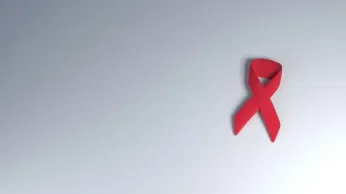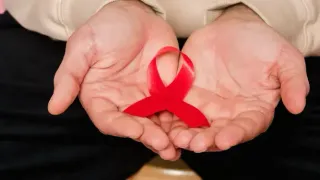
5 hours ago
Projected Drop in Global HIV Assistance Sparks Concern for Vulnerable Populations
READ TIME: 3 MIN.
Global HIV assistance is facing a dramatic downturn, with projections indicating a 30 to 40 percent decrease in funding for 2025 compared to 2023 levels. This alarming forecast comes from the UNAIDS 2025 World AIDS Day report, titled "Overcoming Disruption, Transforming the AIDS Response, "which highlights the risks posed by sudden external funding cuts to the continuity of HIV prevention, treatment, and care programs worldwide .
The reduction in funding is expected to have far-reaching consequences, particularly for vulnerable populations such as children, pregnant and breastfeeding women, and LGBTQ+ communities. These groups have historically faced disproportionate barriers to accessing HIV services, and the projected funding drop threatens to exacerbate existing inequalities in healthcare access and outcomes .
For decades, international donors and organizations have played a critical role in supporting HIV programs in low- and middle-income countries. The Global Fund to Fight AIDS, Tuberculosis and Malaria, for example, has invested US $27. 6 billion in HIV prevention and treatment programs as of June 2025, accounting for 26 percent of all international financing for HIV initiatives . Additionally, US $8. 6 billion has been allocated to TB/HIV programs, reflecting the interconnected nature of these health challenges .
Despite these investments, the global response to HIV has been marked by periodic disruptions, often linked to changes in donor priorities, economic downturns, and competing global health emergencies. The current funding crisis is seen as one of the most severe in recent years, with the potential to undermine hard-won gains in reducing HIV transmission and improving treatment outcomes .
Children and pregnant or breastfeeding women are among the most affected by the projected funding cuts. In 2025, sudden external funding reductions have already begun to disrupt prevention, treatment, and care services for these groups, raising concerns about increased rates of mother-to-child transmission and reduced access to life-saving antiretroviral therapy .
LGBTQ+ communities, particularly transgender people and gay men, also face heightened risks as funding declines. These populations often experience stigma, discrimination, and legal barriers that limit their access to HIV services. The reduction in international assistance could further marginalize LGBTQ+ individuals, making it more difficult for them to obtain testing, treatment, and support .
Public health experts and advocacy organizations are sounding the alarm about the potential consequences of the funding drop. They emphasize that sustained investment is essential to maintain progress in the global HIV response and to protect the health and rights of vulnerable populations .
The UNAIDS report calls for urgent action to address the funding gap and to ensure that HIV programs remain resilient in the face of external shocks. Recommendations include increasing domestic financing for HIV services, strengthening health systems, and prioritizing the needs of marginalized communities .
Advocates also stress the importance of community-led responses and the inclusion of LGBTQ+ voices in decision-making processes. They argue that empowering affected communities to lead and shape HIV programs is key to achieving equitable and sustainable outcomes .
The projected decline in global HIV assistance underscores the fragility of the international response to the epidemic. As funding levels fall, there is a growing risk that years of progress could be reversed, with devastating consequences for millions of people living with or affected by HIV .
Moving forward, it will be critical for governments, donors, and civil society organizations to work together to address the funding gap and to ensure that HIV programs remain accessible and effective for all, especially those who are most vulnerable .






